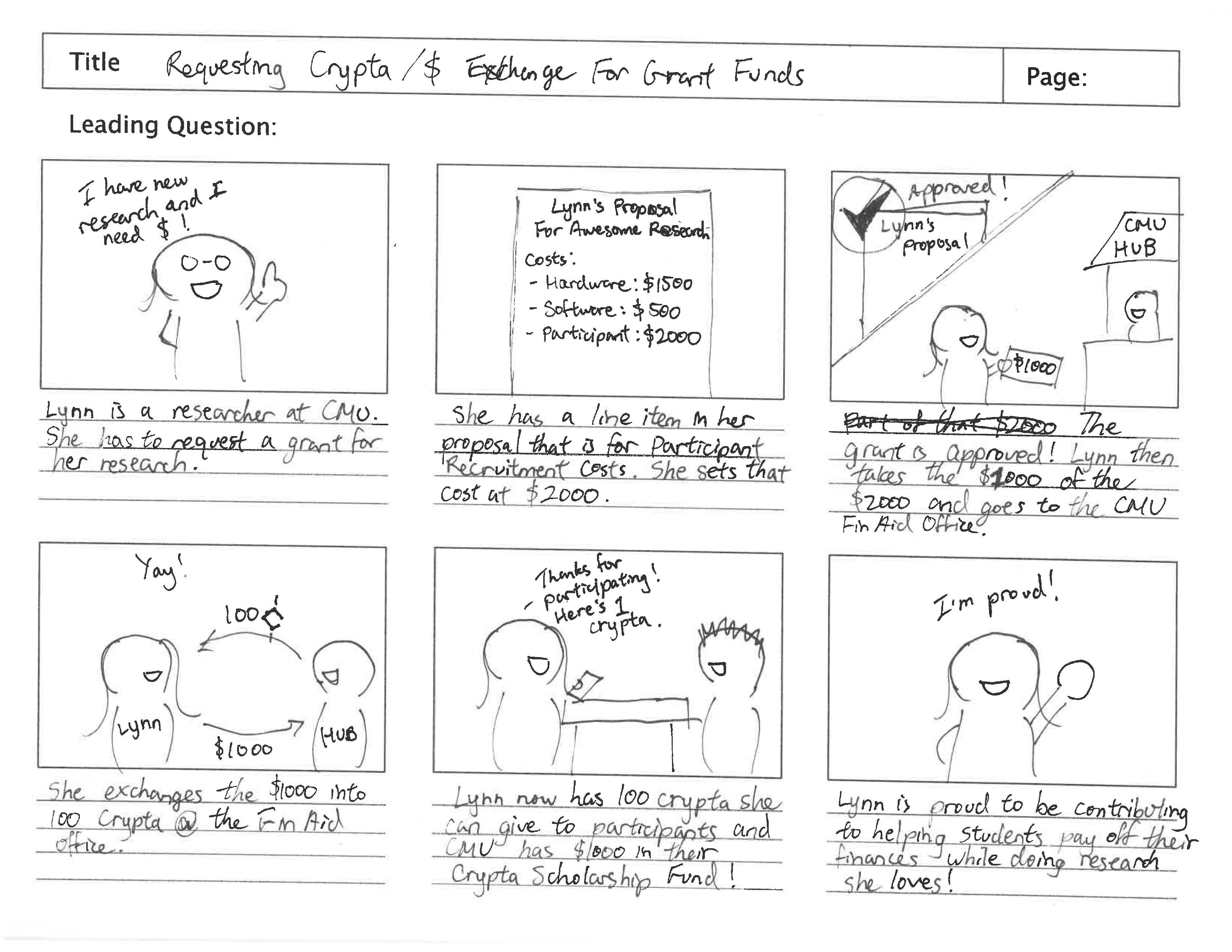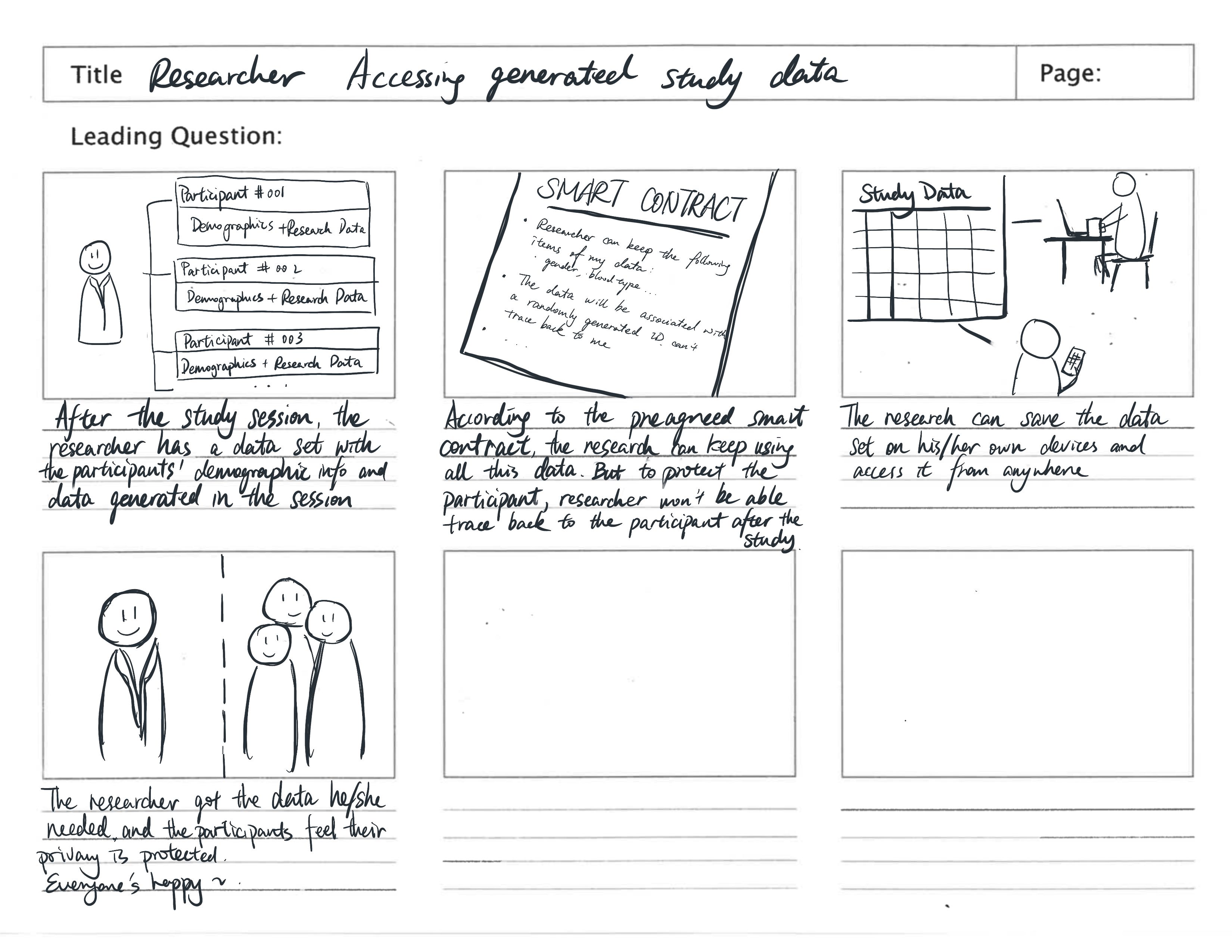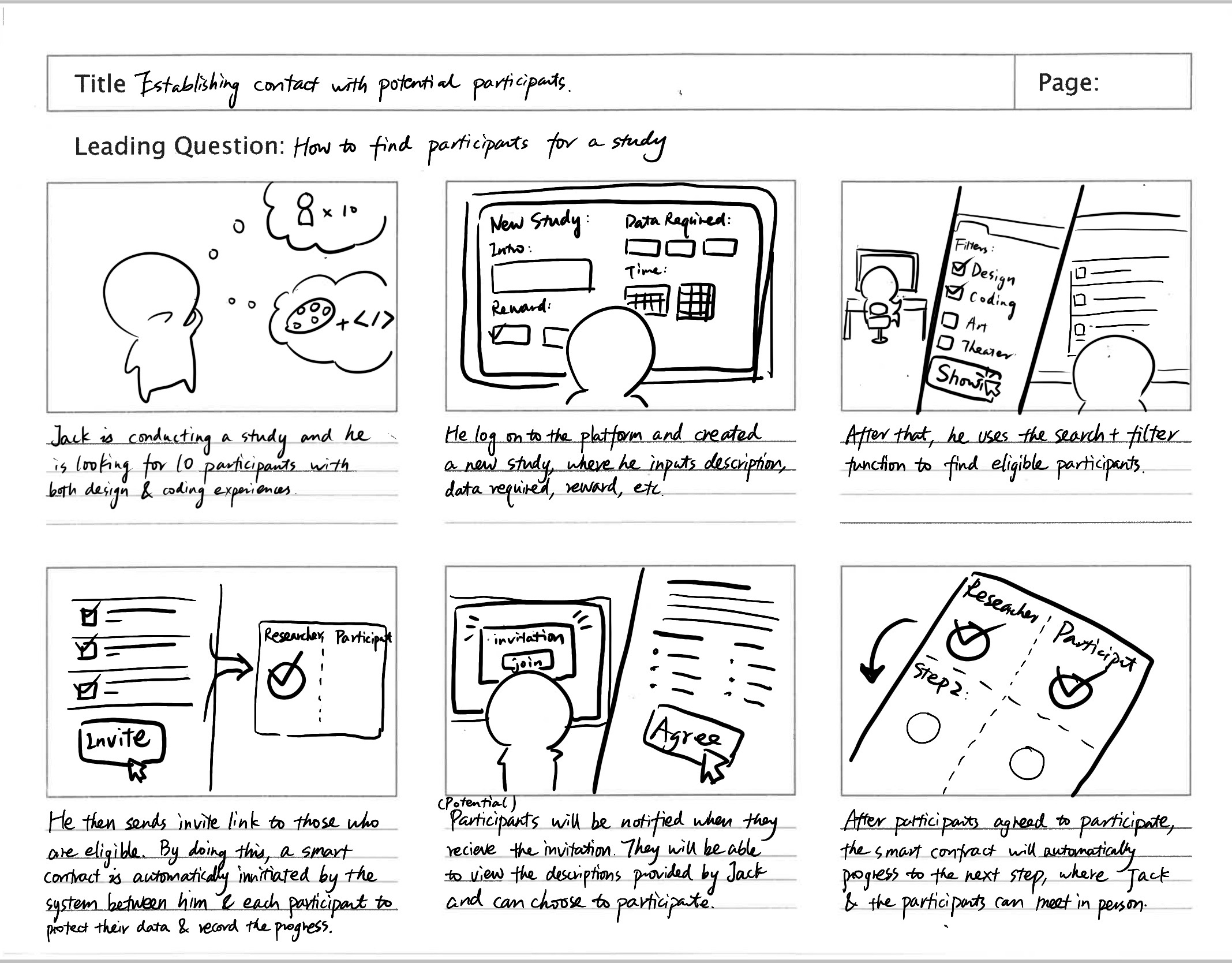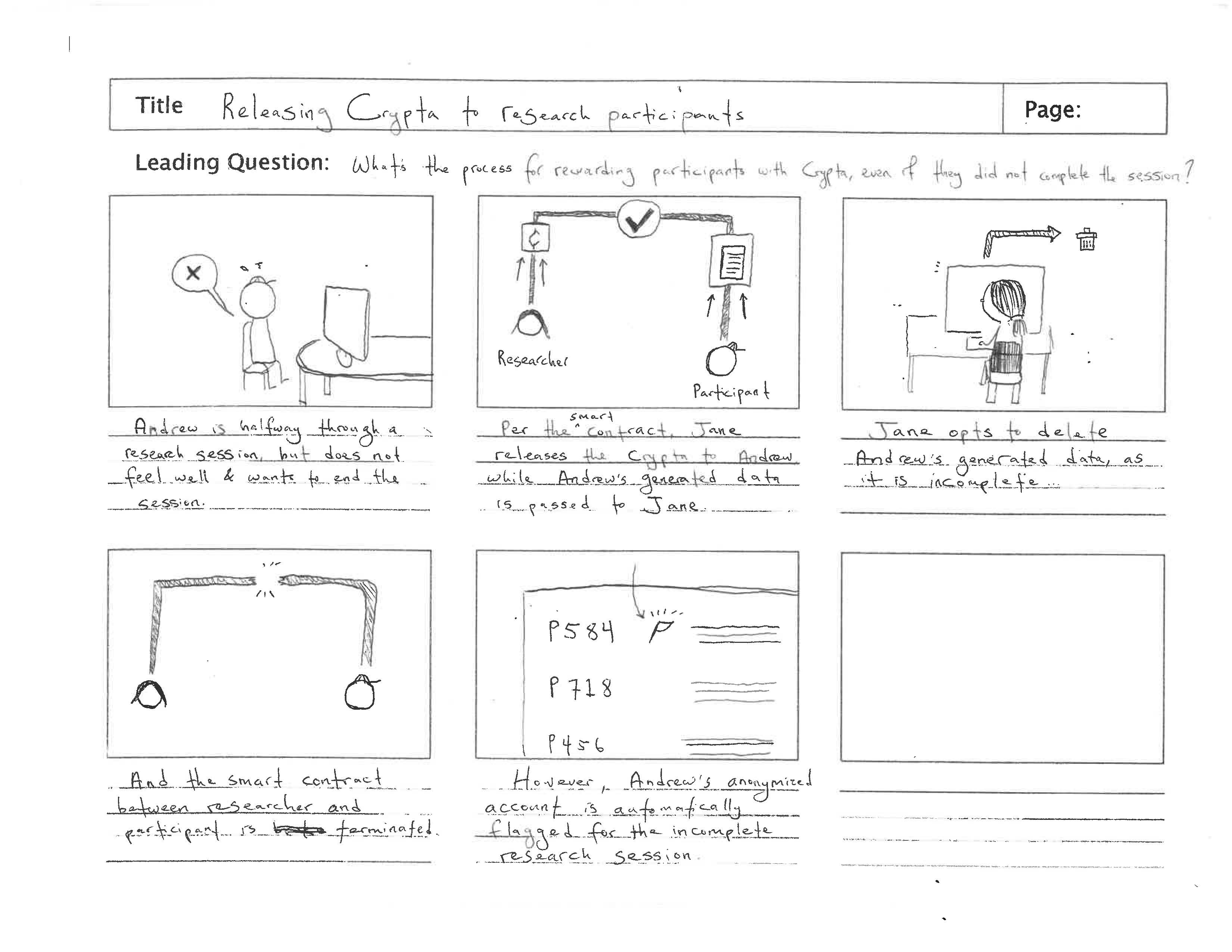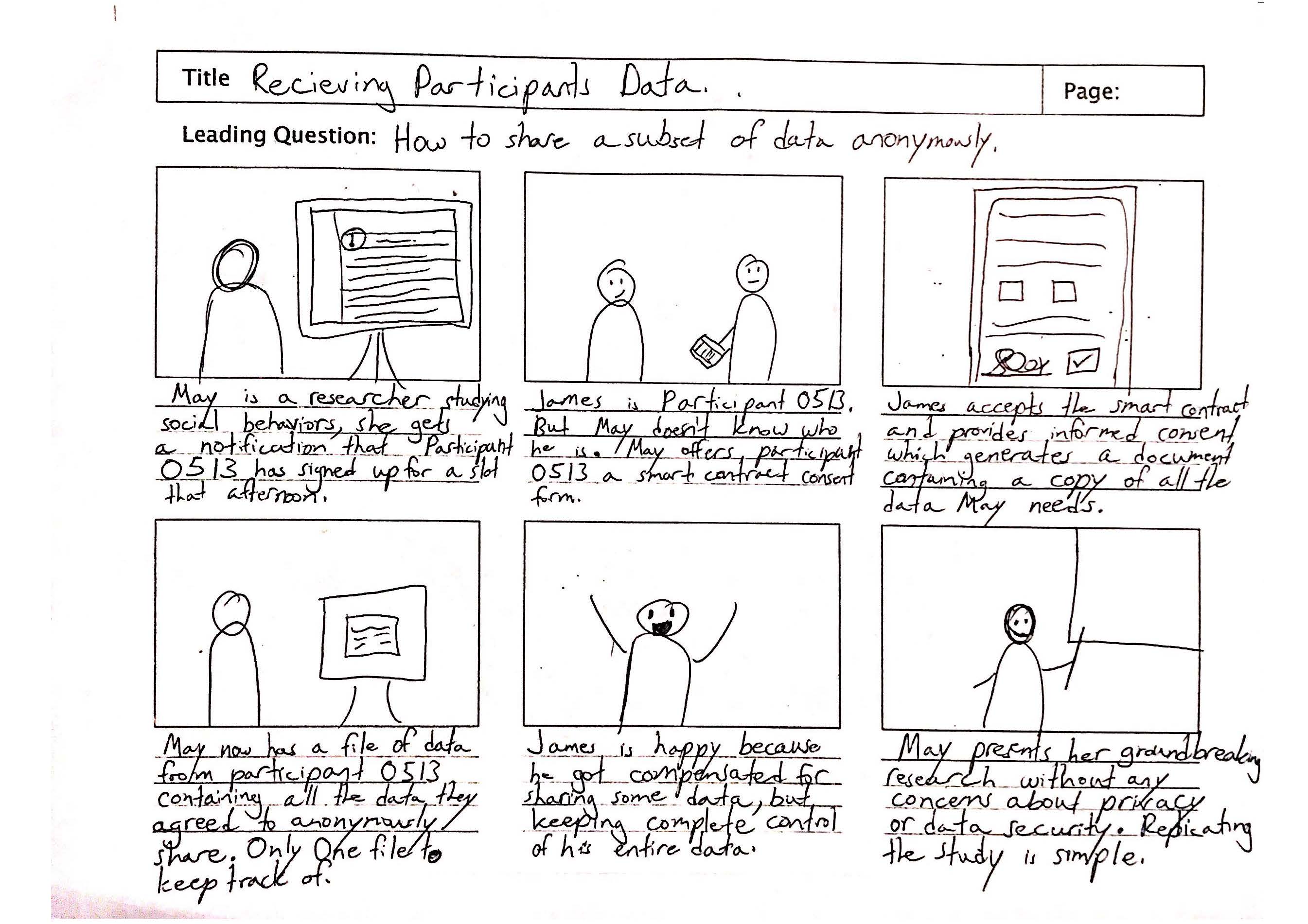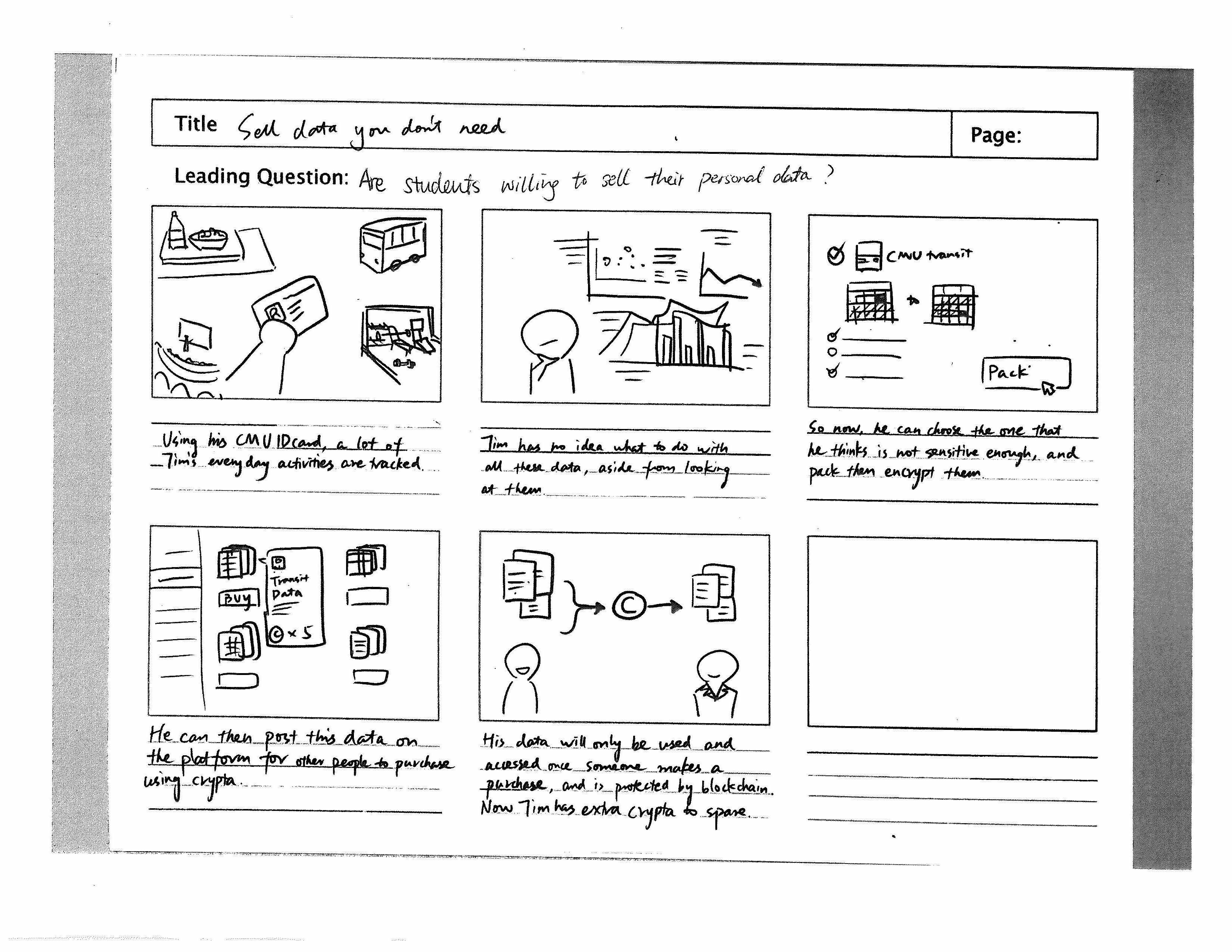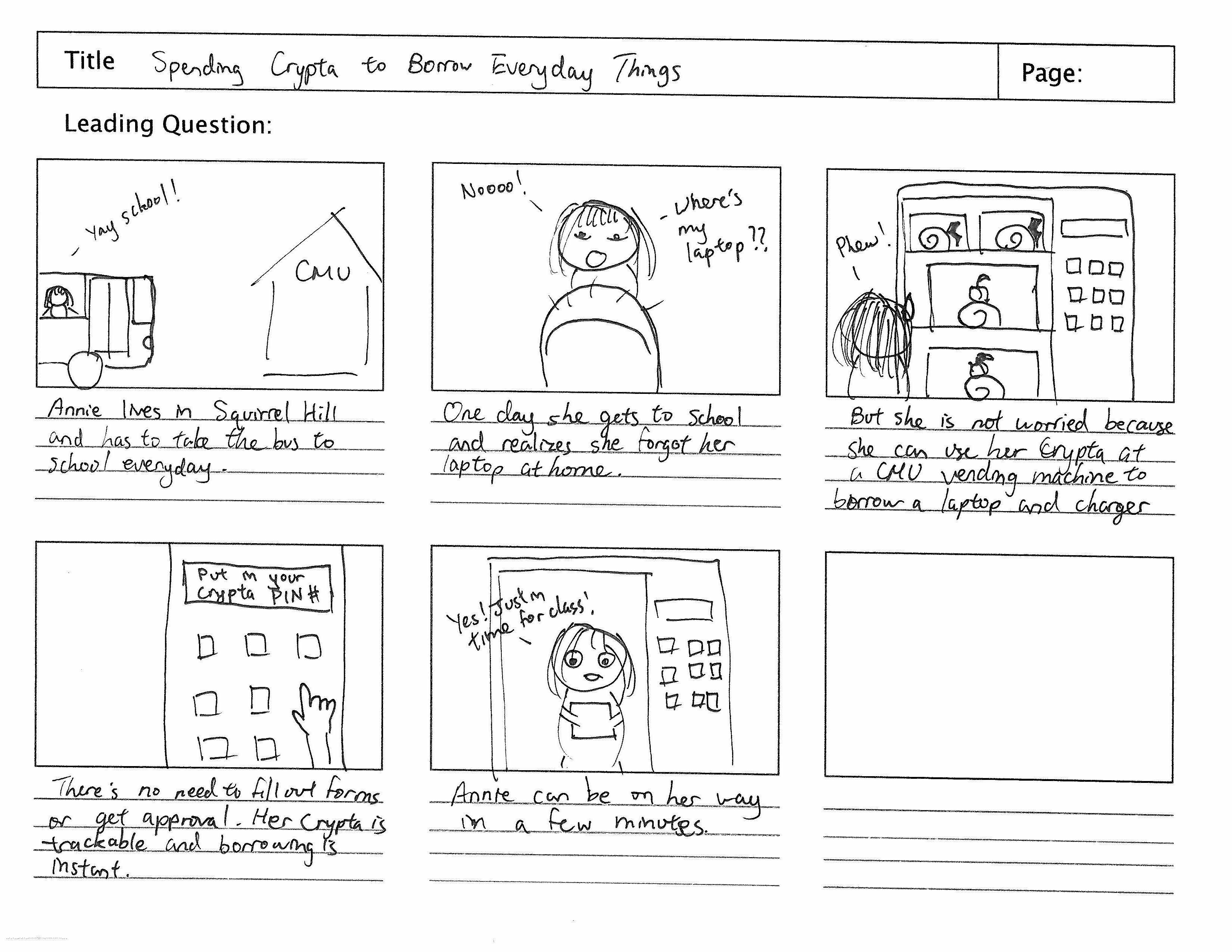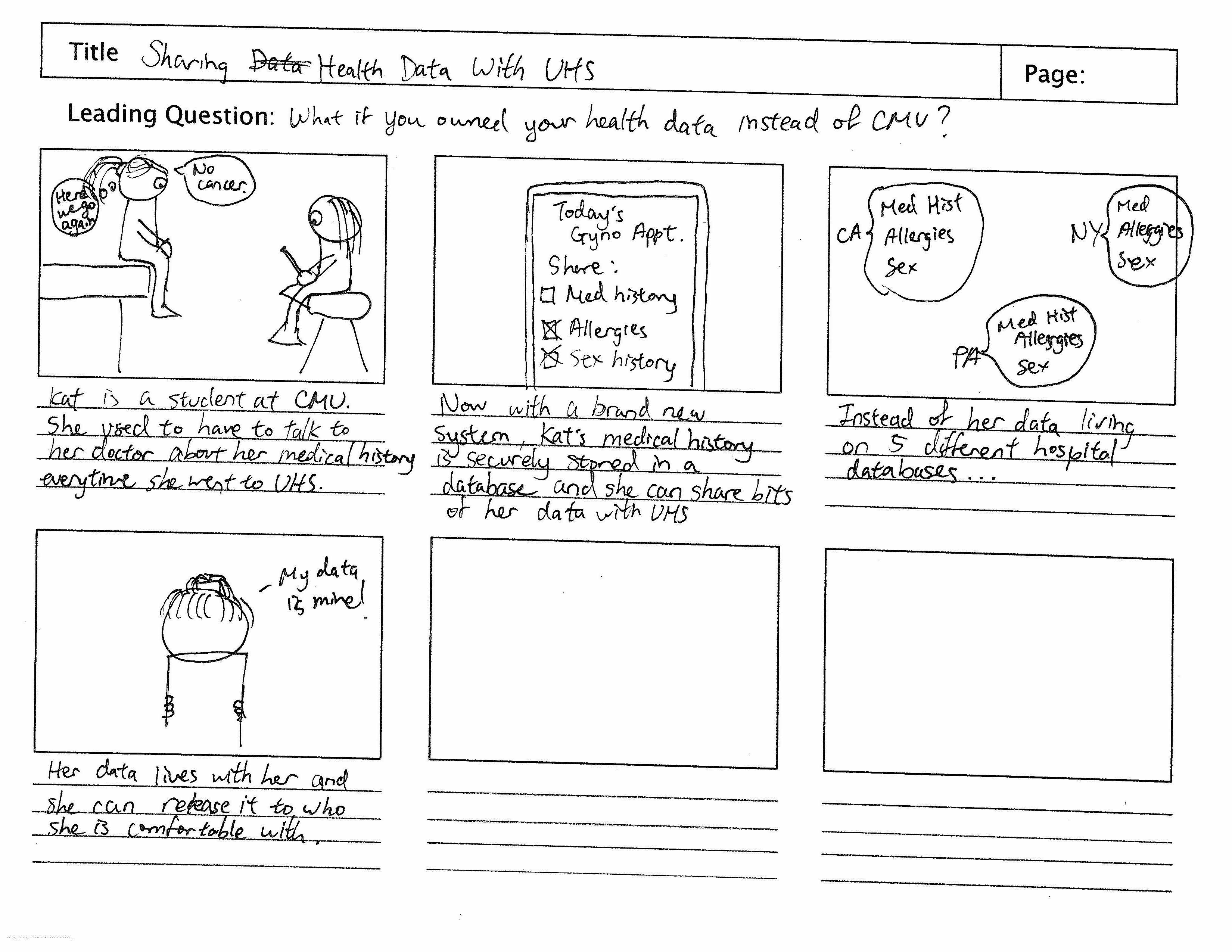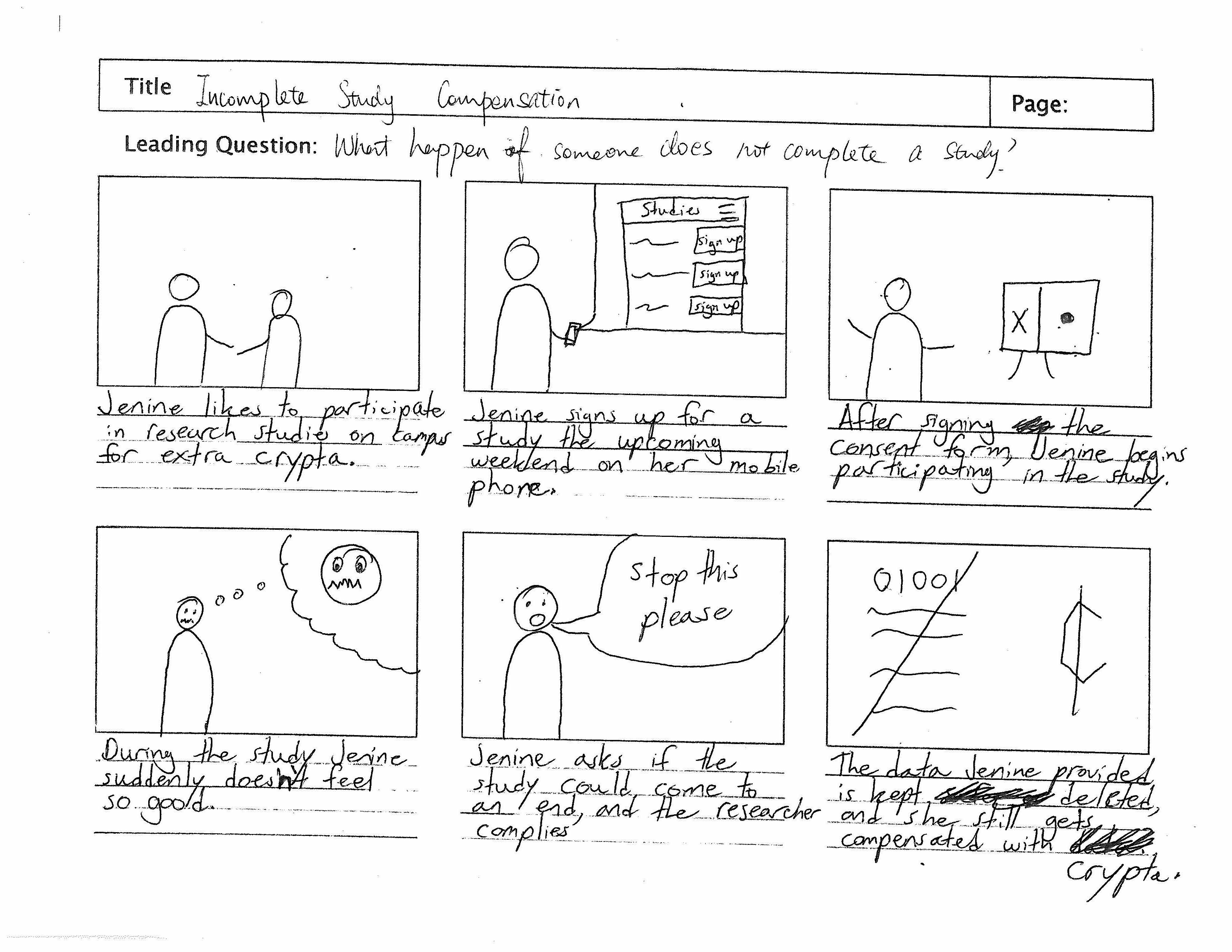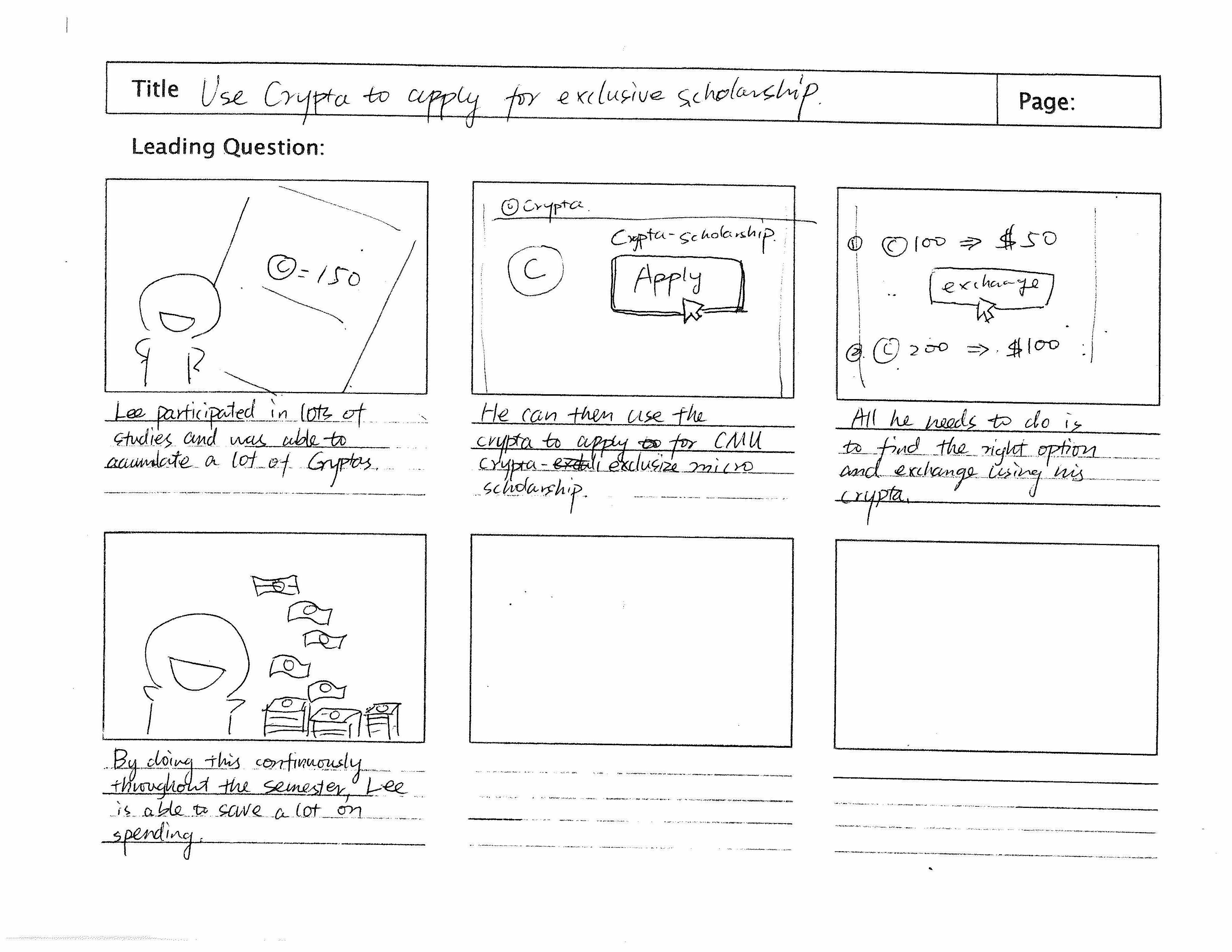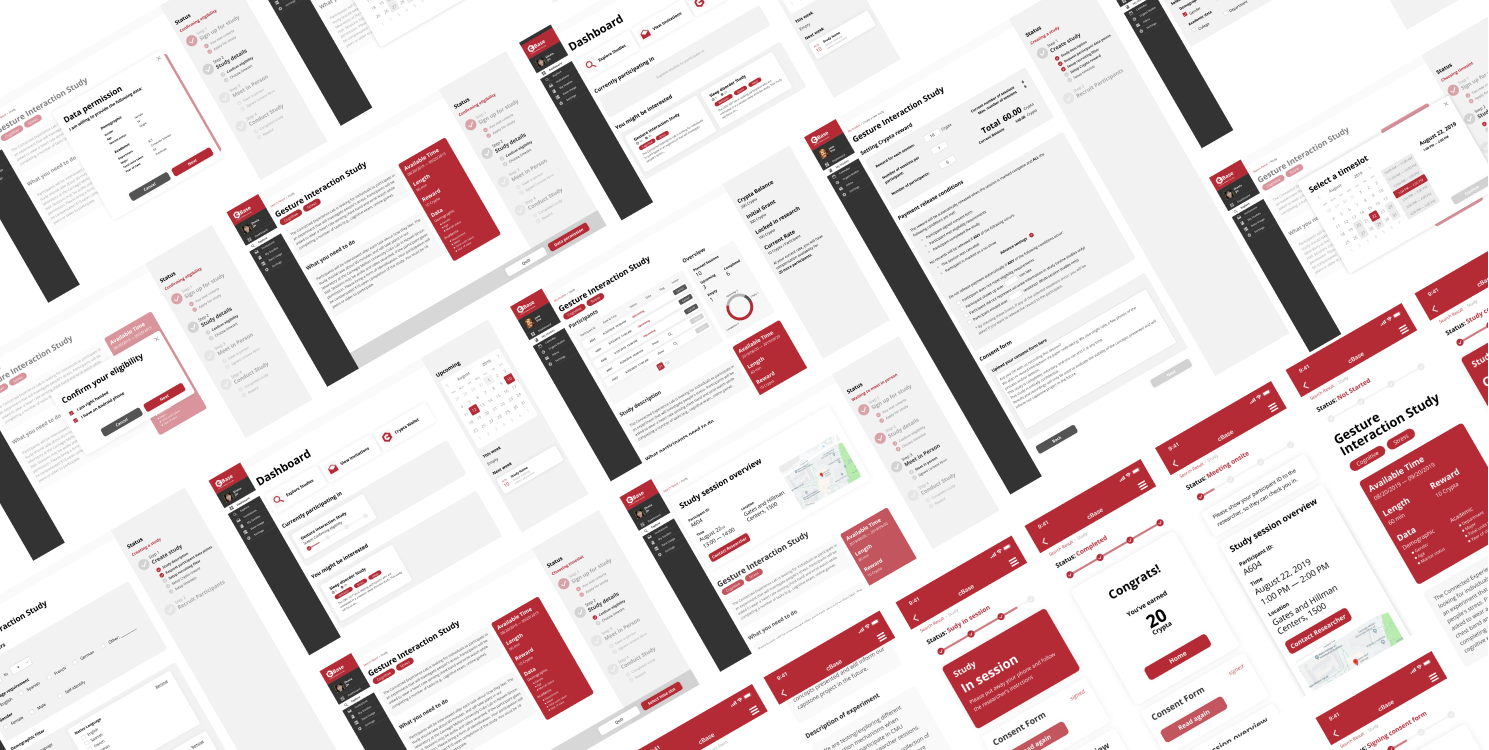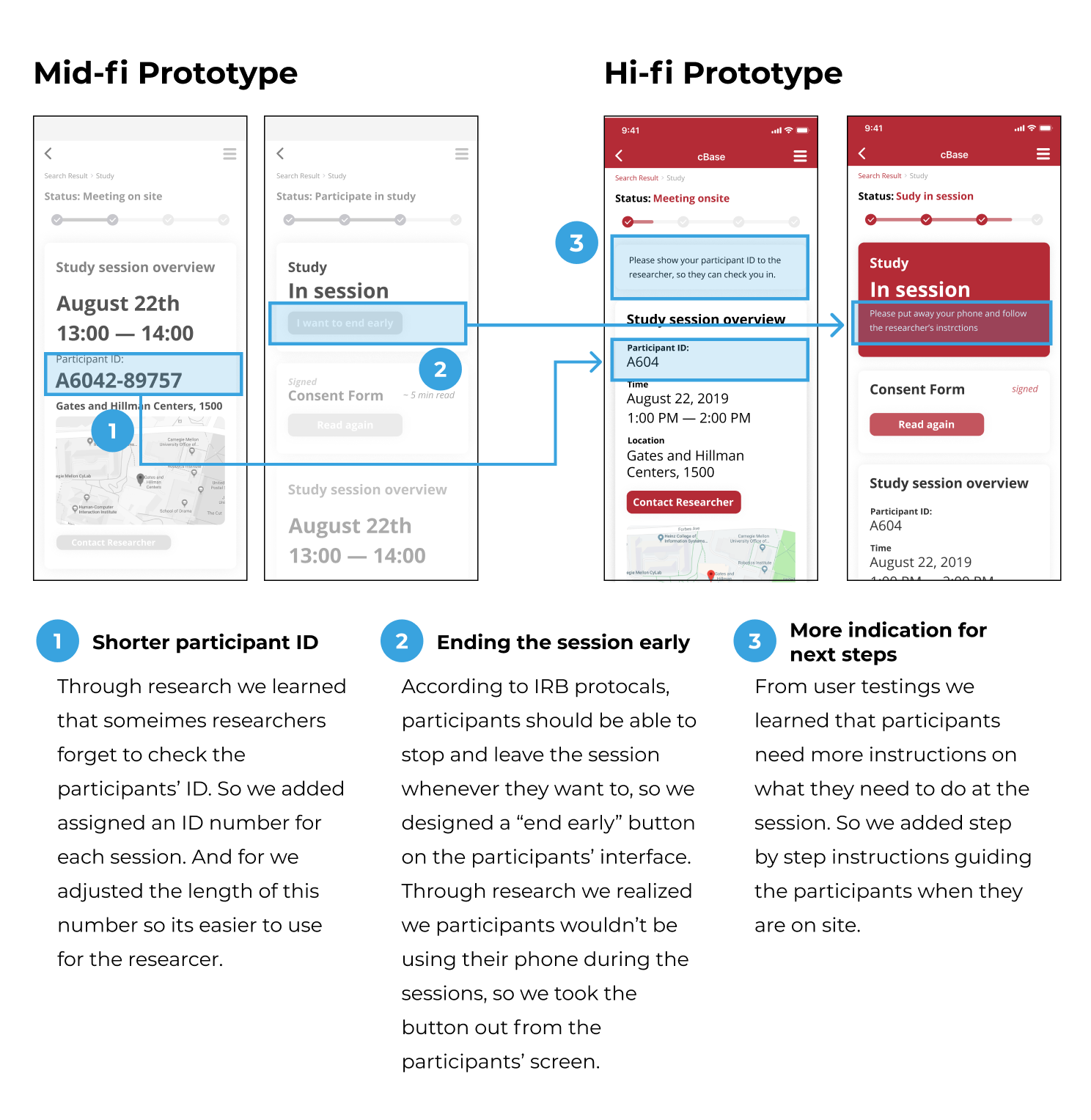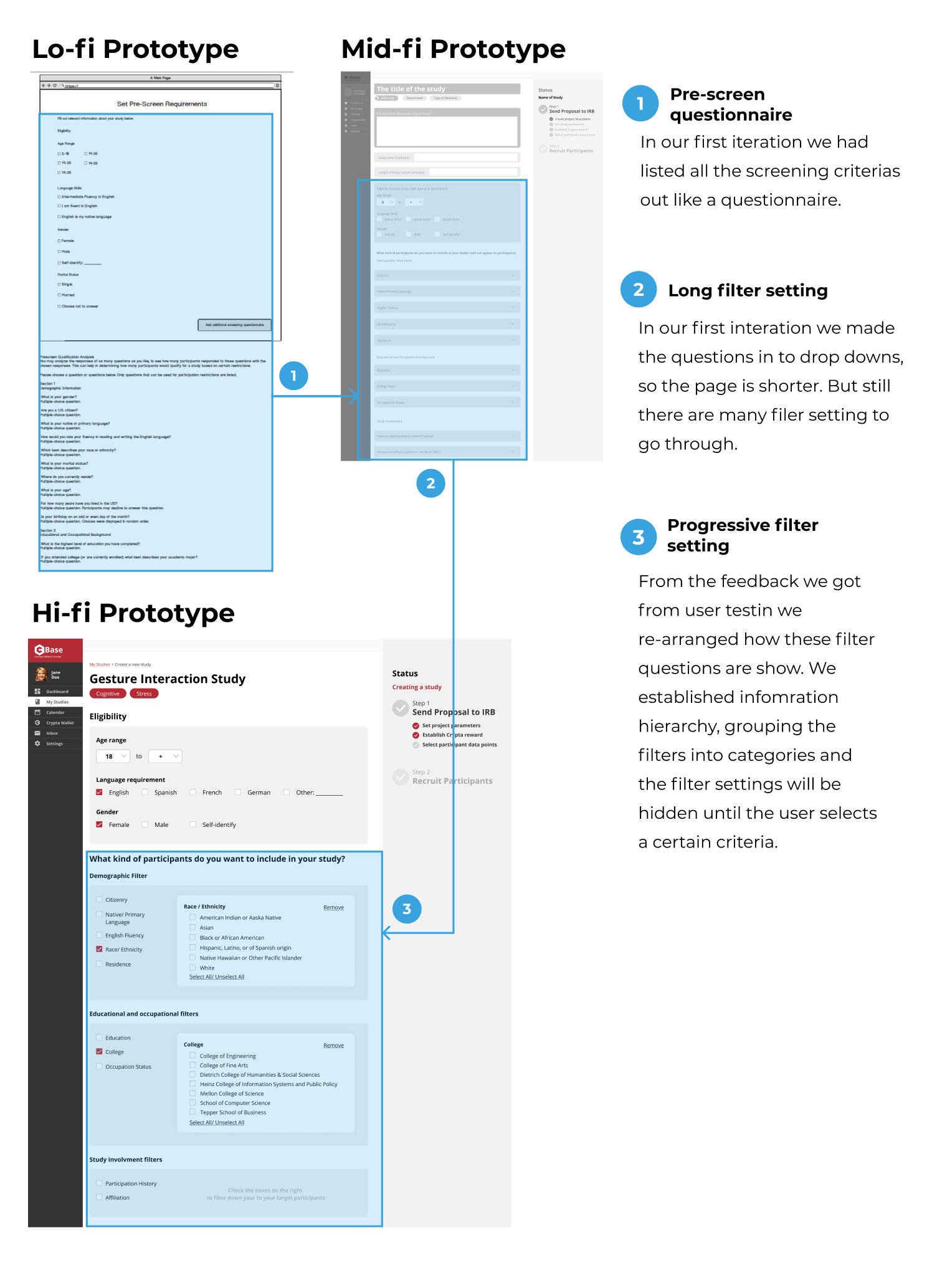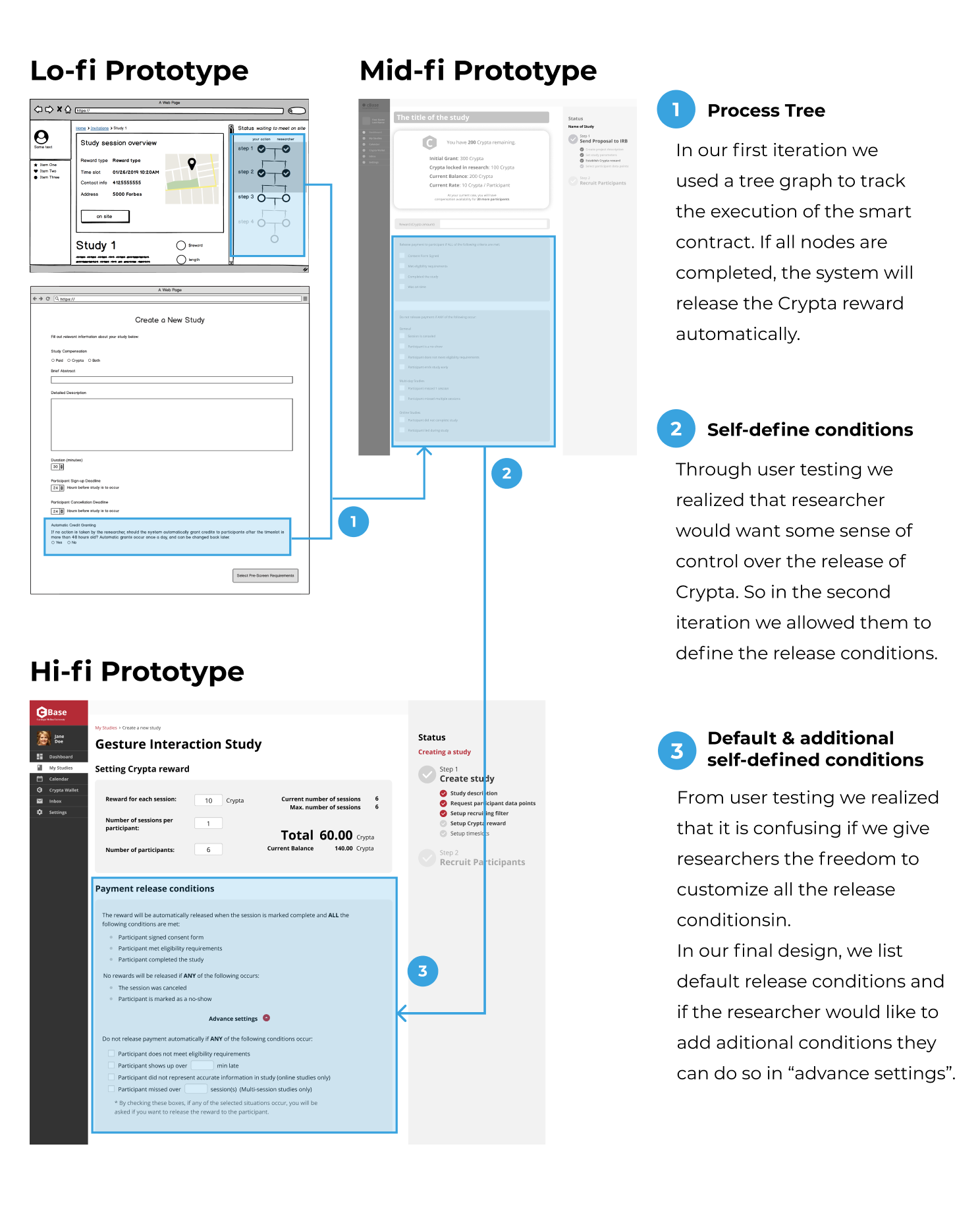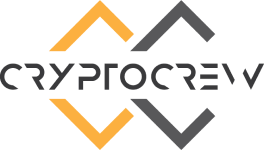

Post our Spring Presentation, we sat down with our clients and discussed our goals for the summer. In particular, we talked about what our final deliverables would be and what we needed to do to get there. The message was clear from our clients: we had a good foundational idea, and now it was time to narrow our scope and refine our story.
We left off with the idea of Crypta being a system for rewarding students for engaging with on-campus activities that contributed to the overall CMU community. Now it was time to decide two crucial components of our system: 1. What goes in the vault? 2. What type of activity did we want to reward as our proof of concept?

As a team exercise, we combed through our past data from surveys, interviews, storyboards, and concept presentations, as well as diving back into the strengths of blockchain, in order to truly ground our solution in technical feasibility, and make it as meaningful as possible.
A few prevalent themes emerged:

Blockchain is great for storing and transacting data. In fact, major companies are starting to consider blockchain networks as a type of database, including hospitals with EHR/EMRs.

Secondly, we started to think more broadly about “what goes into the vault”. We radically switched our thinking on this point: what if companies didn’t add items to the vault, but students did? What would that look like?

Individuals are starting to understand that their personal data is being transacted by companies in exchange for money. People have high negative feelings towards these exchanges, as they take place without an individual’s consent or benefit.
Keeping our prompt as our north star, we asked, how do we enable a running cryptocurrency system, the value of which is backed by data? How do we do that through blockchain?
These narratives combined with each other quite well. The system that started to form was one where students added their data to the vault, and companies compensated students for each addition.
The next logical step was: What if we could protect this “data vault” with blockchain? Could we empower individuals to be in control of their data, and how it is being transacted?

We did a number of interviews with different possible stakeholders in our system to understand feasibility of our new system and whether there was market demand.
In speaking with the Financial Aid Office, we discovered that there are trends in types of scholarships that universities provide and that “merit” based scholarships are generally in decline, in favor of more well-rounded criteria such as diversity. We believe this will open the door for scholarships/funds that reward student engagement in activities CMU believes promote core CMU values.
We discovered that there were a number of data vulnerabilities within the HCII research system, including anonymizing data and keeping student data secure. Though blockchain was possibly.
We learned that the Psych department at CMU has a much more robust system in place for protecting participant data and privacy. In fact, a number of the processes is meant to mimic what our proposed blockchain could do, including: anonymized participant IDs, releasing pre-screen data without tying it to a particular participant, and filtering participants without looking at individual profiles. This presented further proof to us that there was a market for the solution we were creating.
In talking more in depth with researchers, we discovered 3 areas of opportunity:

Ability to prescreen and protect participant data

Automating the consent form process

Programmable automation the payment process through digital currency
Based on the contextual inquiries we ran, we created some screens that captured some of the interactions that we learned about from researchers.
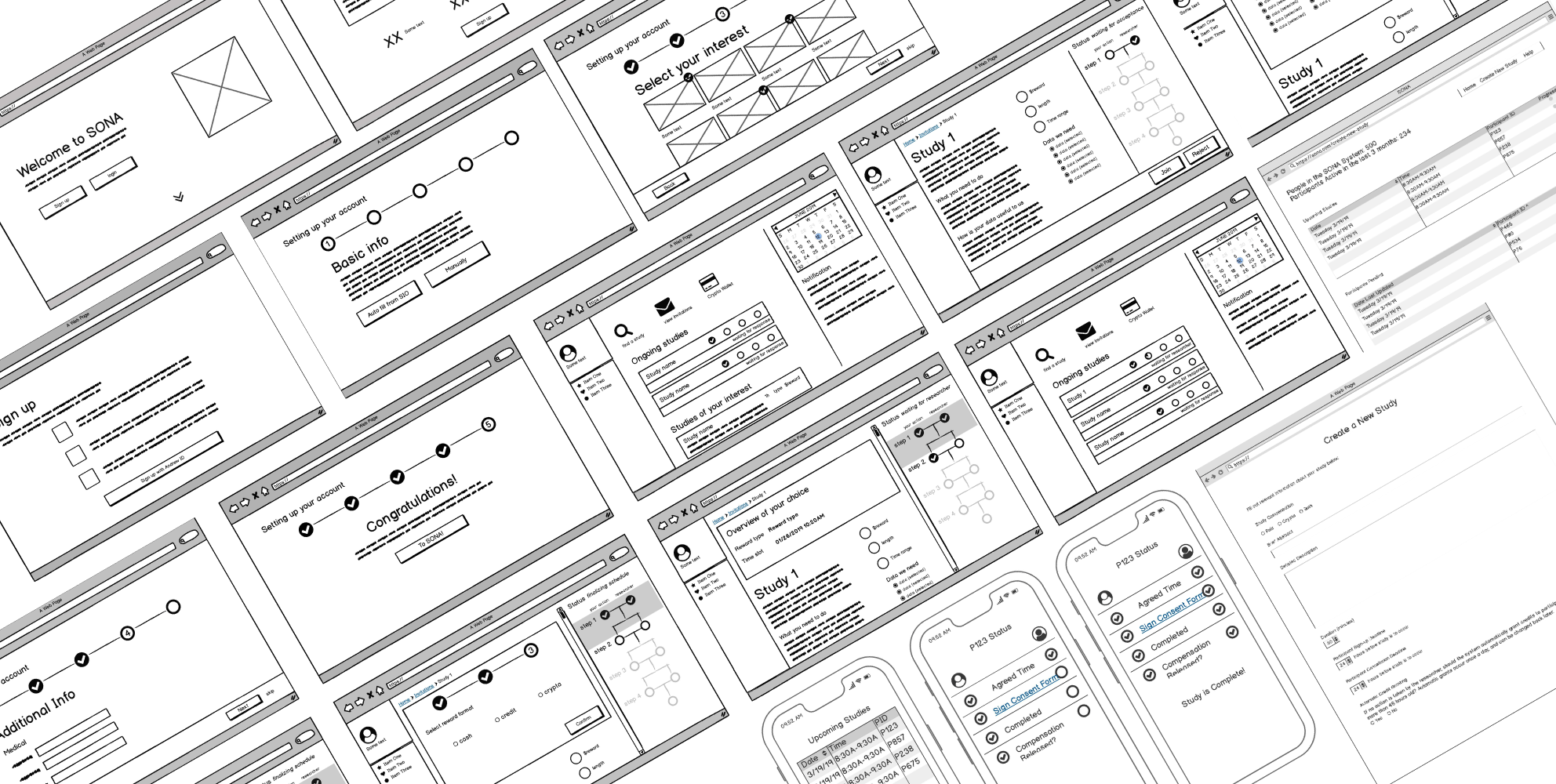
The baseline concept of the Academic Aid Fund came out of the notion that different people can find different value in their currency. We realized that while Crypta would be valuable to researchers as a way to gain participant data, students also needed to find value in it in order to create a currency that could be spent. Rather than create a straight cash exchange, we created the AAF as a way to create a promise of possible future increase in value, which creates speculation and value beyond the standard dollar.

